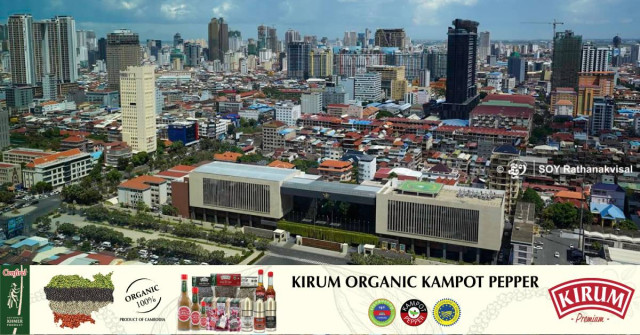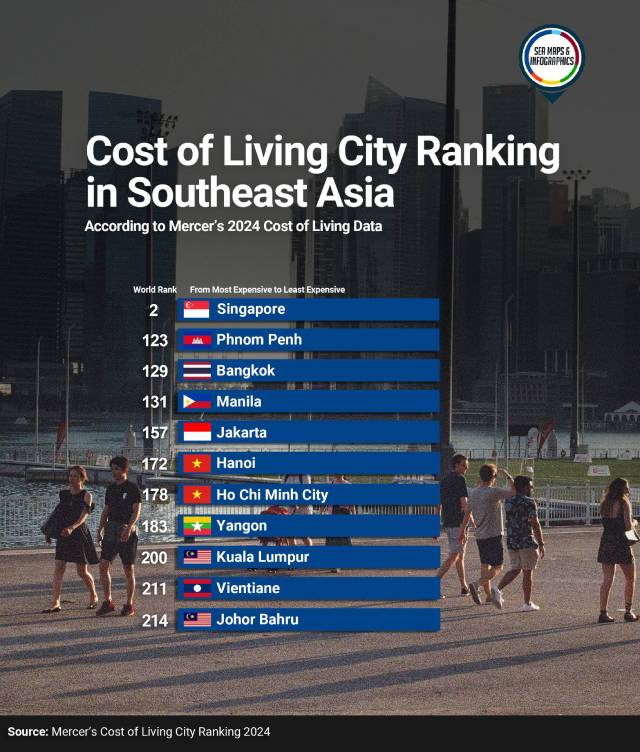Phnom Penh Ranked Second as Costliest City in SEA

- By Meng Seavmey
- June 24, 2024 6:15 PM
PHNOM PENH – Phnom Penh has been ranked as the second costliest city in the Southeast Asia region and the 123th city globally for international workers.
Meanwhile, Singapore stays at top among ASEAN countries, and second globally, according to the Mercer's 2024 Cost of Living Data, an international data analysis company.
The research evaluated 226 cities across five continents, assessing comparative costs of over 200 items of daily needs, including housing, transport, food, clothing, household goods and entertainment.
 The infographic of cost of living city ranking in Southeast Asia. Source_ SEA Maps & Infographics _ Facebook
The infographic of cost of living city ranking in Southeast Asia. Source_ SEA Maps & Infographics _ Facebook
Hong Vannak, economic researcher at the Royal Academy of Cambodia, said one of the factors for the increase of the cost of living in the city or urban areas is modernization that influences the cost of services, products, technologies, and entertainment.
“In urban areas, especially cities, there have to be more expenses because of the modernization. The land is getting more expensive and so are houses,” he said.
In comparation, cities in the region are also in two categories: old and new. Some cities are already developed, while some are developing — including Cambodia which has only accelerated the development in the past two decades, Vannak said.
Inflation in those developing cities also makes most items more expensive. This does not affect people living in rural areas much because demand is low while it is high in the city. These items also include household materials and food.
“It’s a transition of socio-economic development that happens globally, so Cambodia is no exception,” Vannak said.
Inflation this year is projected to reach 2.5 percent, up 0.4 percentage points on last year, the National Bank of Cambodia said in January.
The high cost of living and inflation greatly affect people in middle or low-middle classes but the impact will spread to the upper middle class after a long time of non-recovery, Vannak said.
The government’s ability to intervene was limited as some problems are at global level. However, the government should try to keep prices manageable for people.
“They can help with that by trying to keep the prices under control and not exceed the level that people can afford,” he said.
The economist suggested that local enterprises should produce affordable products for domestic supply with acceptable price and quality. In the long run, this approach might help with the domestic supply and demand flow.
“If we sell our locally produced products in a higher price than imported ones, we will not be successful,” Vannak said, adding that the government should encourage enterprises to apply this approach.
















